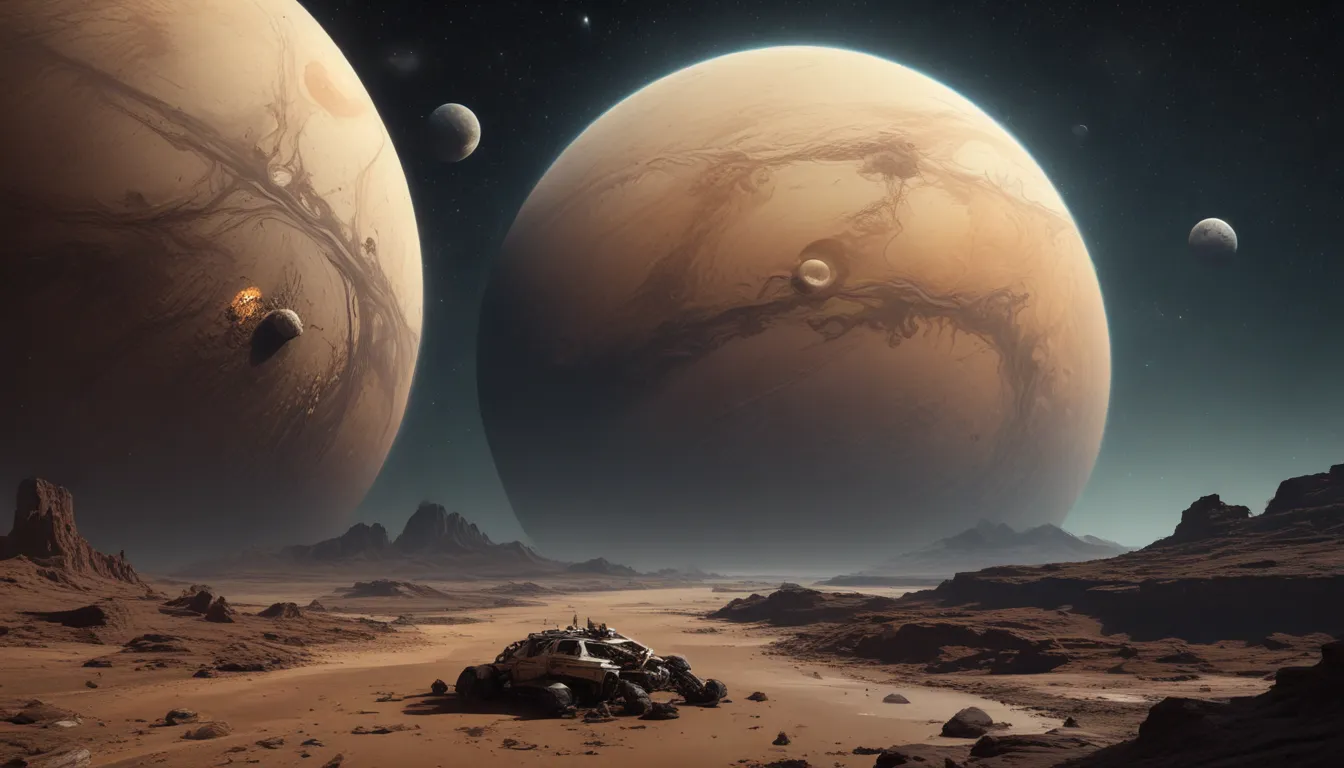A Note About Images: The images used in our articles are for illustration purposes only and may not exactly match the content. They are meant to engage readers, but the text should be relied upon for accurate information.
Are you ready to embark on a cosmic journey to explore the wonders of Titan, the largest moon of Saturn? Join us as we delve into 18 fascinating facts about this celestial marvel that continues to captivate scientists and space enthusiasts worldwide. From its dense atmosphere and hydrocarbon lakes to the potential for hosting extraterrestrial life, Titan stands out as a unique and enigmatic world in our solar system. Let’s shed light on the mysteries that make Titan a subject of scientific fascination and uncover the remarkable traits and discoveries that define this extraordinary moon.
Titan: A Celestial Marvel
Titan, the largest moon of Saturn, is a celestial marvel that continues to captivate astronomers and space enthusiasts alike. With its intriguing characteristics and enigmatic nature, Titan presents a wealth of opportunities for scientific exploration and discovery. Let’s explore 18 interesting facts about Titan that highlight its profound significance in the realm of planetary science.
Titan’s Size and Distinction
- Titan holds the prestigious title of being the second-largest moon in our solar system, surpassed only by Jupiter’s Ganymede. Its substantial size and unique features have made it a focal point for extensive scientific research.
Titan’s Dense Atmosphere
- Unlike most moons in the solar system, Titan boasts a dense atmosphere primarily composed of nitrogen, with traces of methane and hydrogen. This distinctive feature has piqued the curiosity of scientists and space enthusiasts alike, sparking a quest for deeper insights into its atmospheric dynamics.
Titan’s Hydrocarbon Lakes and Seas
- Titan’s surface is adorned with vast lakes and seas, not of water, but of liquid methane and ethane. These hydrocarbon bodies create an otherworldly landscape that offers a fascinating glimpse into the diverse geological formations beyond Earth.
Mysteries Beneath the Veil
- The thick atmosphere surrounding Titan has long obscured its surface features from direct observation. However, advancements in space exploration have provided tantalizing glimpses of its enigmatic terrain, fueling a fervent quest for deeper insights.
Titans Parallel with Earth
- The geological features of Titan’s surface, including mountains, dunes, and river channels, bear a striking resemblance to Earth’s primordial landscape. This parallel has sparked speculation about the moon’s potential for harboring extraterrestrial life, igniting scientific interest.
Cryovolcanoes: Icy Geysers on Titan
- Titan is home to cryovolcanoes, or ice volcanoes, believed to erupt with a slushy combination of water, ammonia, and methane. These icy geysers contribute to the moon’s dynamic geological activity, offering insights into its complex internal processes.
Titan’s Far-Reaching Atmosphere
- The expansive atmosphere of Titan extends far into space, creating a substantial presence around the moon. This atmospheric expanse serves as a captivating subject for scientific inquiry, unraveling the mysteries of its composition and behavior.
Extreme Cold and Methane Rainfall
- Titan’s surface temperature hovers around -290°F (-179°C), creating an exceptionally frigid environment. Moreover, the moon experiences periodic rainfall of methane, mirroring Earth’s water cycle with a mesmerizing extraterrestrial twist.
Titan’s Methane Cycle and Weather Patterns
- The methane cycle on Titan drives a complex interplay of weather patterns, including cloud formations, precipitation, and evaporation. This atmospheric system presents a captivating subject for scientific study, offering insights into the diverse climatic processes at play.
Flowing River Channels
- Titan boasts a network of river channels that crisscross its surface, indicating the historical flow of liquid hydrocarbons. These intricate channels reveal the moon’s geological evolution, prompting speculation about the forces shaping its mysterious landscape.
Unveiling Titan’s Mysteries
Overcoming Challenges: Titan’s Opaque Atmosphere
- Early observations of Titan were hindered by its opaque atmosphere, shrouding the moon in mystery and prompting ambitious missions to uncover its secrets. Overcoming this challenge has been paramount in deepening our understanding of Titan’s complex characteristics.
Spectacular Sunsets in Titan’s Hazy Atmosphere
- Titan’s hazy atmosphere fosters breathtaking sunsets that cast a mesmerizing glow across the moon’s horizon. This celestial spectacle, framed by atmospheric particles, adds an enchanting dimension to Titan’s captivating allure.
Robotic Explorers Unveiling Titan’s Terrain
- Robotic explorers like the Huygens probe have ventured to Titan’s surface, unveiling a diverse range of terrains from icy plains to rugged highlands. These groundbreaking missions have provided unprecedented insights into the moon’s enigmatic topography.
The Potential for Habitability: Titan’s Subsurface Ocean
- The presence of a subsurface ocean beneath Titan’s icy crust has sparked speculation about the moon’s potential habitability. This tantalizing prospect has fueled scientific inquiry into Titan’s ability to support life, expanding the frontiers of astrobiological exploration.
Investigating Astrobiological Potential in Methane Lakes
- Titan’s methane lakes and seas offer valuable clues for investigating astrobiological potential beyond Earth. The diverse chemical interactions within these hydrocarbon reservoirs provide insights into the prospects for life in extraterrestrial environments.
Inspiring Future Exploration
The Enduring Mysteries of Titan
- The mysteries enshrouding Titan continue to inspire ambitious plans for future exploration, driving the pursuit of innovative missions to unravel its enigmatic secrets. The captivating allure of this moon fuels a relentless quest for deeper insights into its profound scientific significance.
Unraveling Titan’s Secrets
In conclusion, Titan remains a fascinating celestial body that continues to captivate astronomers and space enthusiasts with its unique characteristics and potential for scientific discovery. As we delve deeper into the mysteries of this enigmatic moon, Titan serves as a source of inspiration and wonder, offering valuable insights into the complexities of our solar system and beyond.
FAQs
What makes Titan an intriguing object of scientific study?
Titan’s dense atmosphere, hydrocarbon-rich surface, and potential for hosting prebiotic chemistry make it a compelling subject for scientific exploration. Its unique characteristics provide valuable insights into the processes shaping planetary bodies and offer clues about the potential for life beyond Earth.
How does Titan’s environment differ from that of other moons in the solar system?
Unlike most other moons, Titan boasts a dense atmosphere and features liquid hydrocarbon lakes and rivers on its surface. These distinct attributes set Titan apart and make it an intriguing target for scientific investigation, offering a glimpse into the diverse environments present within our solar system.
As we continue to unravel the mysteries of Titan, the largest moon of Saturn, we are drawn into a world of celestial marvel and scientific intrigue. Join us on this cosmic journey as we explore the wonders of Titan, a celestial body that continues to inspire exploration and discovery in the vast expanse of our solar system.






